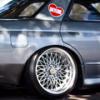Rb25 And 26 Squish Pad Removal And Cr
Announcements
-
Similar Content
-
Latest Posts
-
By Murray_Calavera · Posted
Makes sense. I would do something different if I felt like there was a better option. Generally the only other area I'm happy to jack on is where I want to put the stand. The pinch weld is not an option for me for either the jack or stands, so very limited options overall. Plus never having had an issue with doing this, has kinda reinforced in my mind that it's fine. I'd do it on any car without a second thought these days lol. -
By joshuaho96 · Posted
I know on some cars it's explicitly endorsed in the service manual but a lot of them it isn't which is what gives me pause. I know a lot of cars also have you jack up the car by the radiator core support which is a lot easier to get to than some crazy deep section of the front subframe. I'm just reluctant to find out if any of that is really safe to do if not listed in the service manual. The FK8 has even the R-chassis beat in this regard, the front subframe jack point is almost fully behind the front tires and is surprisingly recessed into the car. -
By Murray_Calavera · Posted
I've been doing it for longer then I can remember and on pretty much every car I've owned without any issues. Jack on a tow point (or under the rear diff), jack stands under control arms/other beefy suspension component is my go to if I'm not using the quick jack. -
By Murray_Calavera · Posted
@f00stx Do you have any polyurethane bushes? They can be pretty noisy if they dry out. -
Just to recap, was there a definitive answer on whether this unit (or a similar one) gets around the Japanese language problem? I want to upgrade my 370GT, but want to keep the cameras (and possibly upgrade them to HD if that's even possible?) but then use Australian nav data.
-





Recommended Posts
Create an account or sign in to comment
You need to be a member in order to leave a comment
Create an account
Sign up for a new account in our community. It's easy!
Register a new accountSign in
Already have an account? Sign in here.
Sign In Now